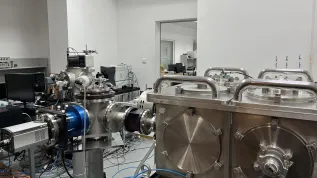
Container ships can consume less fuel, gain better manoeuvring capabilities and increased navigational safety after introducing improvements co-developed by Polish engineers in a scientific and industrial consortium. The changes will concern ship propellers, among other things.
Scientists from the Gdańsk University of Technology together with experts from Germany and Belgium.are working on the application of hybrid CRP-POD propulsors on ultra large container (ULCS). The researchers admit that the container ships have the highest individual carbon footprint, but emphasize that they take advantage of the economy of scale and transport huge amount of goods worldwide. Therefore, they are perfect targets for increasing propulsion efficiency and improving the navigation safety, and additionally reducing the amount of greenhouse gases emitted by these vessels.
TURN THE SCREW
Three solutions are being developed as part of the project carried out by researchers from the Department of Marine Hydromechanics and Hydroacoustics led by Dr. Paweł Dymarski. The first is the configuration with two propellers, the second involves azimuth thrusters, the third - contra-rotating propellers.
The researchers point out that conventional ship propellers have low efficiency. Most of them waste about 40 percent of the energy in the form of rotational losses in the wake, vortex generation, noise production, cavitation, etc. In their opinion, the recovery of such losses is one of the major ways to contribute to a more rational, environmentally friendly use of energy.
'The idea behind our project was to turn a make a classic propulsion system into a hybrid system. Instead of only conventional propellers on the shaft, there will be two pod thrusters behind them and each of them will rotate in the opposite direction than the propeller on the shaft. Each of these solutions has greater propulsion efficiency', says Hanna Pruszko from the Institute of Ocean Engineering and Ship Technology at the Faculty of Mechanical Engineering and Ship Technology.
By 2023, scientists will check whether (and how much) these solutions will increase propulsion efficiency of container ships. They will use advanced numerical methods for computational fluid dynamics (CFD), experiments will also take place in a towing tank. Manoeuvring tests using large crew models will be carried out on a natural lake.
The members of the Twin-crp-pod ULCS project consortium are: the Gdańsk University of Technology, the Foundation for Safety of Navigation and Environment Protection (Poland - project coordinator), SeaTech Engineering (Poland), Hamburgische Schiffbau-Versuchsanstalt GmbH (Germany), Center of Marine Technologies (Germany), BRABO (Belgium) and Piening Propeller (Germany).
PAP - Science in Poland
kol/ agt/ kap/
tr. RL













